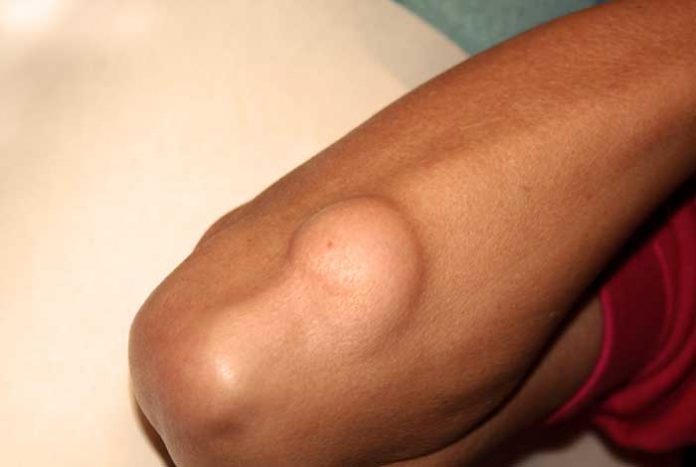
Lipomas may seem an absurd health condition to you at first, but they are lumps caused due to the overgrowth of fat cells under the skin. Doctors generally consider them as benign tumors, which are essentially non-cancerous. A person may also want to get a lipoma removed as this may cause symptoms, general pain and other complications. Some people have concerns about the cosmetic appearance of a lipoma.
Lipoma might appear anywhere on the body, where the fat cells are present. Most commonly they appear on the trunk, shoulders, neck, chest, armpits and thighs. Rarely, they might also appear inside bones, internal organs or muscles.
A lipoma usually feel very soft, and might move slightly under the skin when pressed. Gradually over a period of several months to years, they can grow to around 2-3 cm in size.[1] In rare cases, people develop giant lipomas that can grow as large as 10 cm in size. [2]
Keep reading to know the symptoms, causes and related health implications due to one or more lipomas.
Causes of Lipomas
Doctors still not fully understand what actually lead to lipoma development.
At times, people get a faulty gene from their parents that may result in one or more lipomas. This condition is rare and known as familial multiple lipomatosis.
Lipomas are more frequent in people with certain medical conditions, such as:
- Gardner’s syndrome
- Adiposis dolorosa
- Cowden syndrome
- Madelung’s disease
A handful of researches indicate that some lipomas might begin with a substantial injury around that area.[3]
Symptoms of Lipomas
A lipoma will typically feel as a soft, round skin lump just underneath your skin. Lipomas are generally painless unless they affect joints, nerves, organs or the blood vessels. In many other cases, they don’t have any clear symptom.
A person with a lipoma deep under his/her skin might not be able to see it or feel it. A deeper lipoma might exert pressure on the internal organs or nerves, and can also lead to several associated symptoms. For example, a person, who has a lipoma on or near bowels might also experience vomiting, nausea and constipation.

Associated Health Complications
Lipoma is just benign mass of fat cells. However, experts have divided opinions on whether lipomas can become cancerous or not. A mass of fat cells, which is cancerous is called, liposarcoma.
Some experts also believe that liposarcomas do not develop from lipomas, but are a type of tumor.[4] It is also extremely rare that a lipoma becomes cancerous. Experts have estimated that around 1% of the people develop lipomas.
Risk Factors For Lipomas
People, who have a close relative with lipoma, are at a greater risk of developing this condition. Lipomas most occur in people, aged 40 to 60 years old.
Other risk factors that might increase your risk of developing a lipoma are:
Diagnosis of Lipomas
Doctors may diagnose a lipoma simply by conducting a physical examination.
They may inspect and feel the lump beneath the skin. If the lipoma is either large or painful, or both, the doctor may also conduct further tests to see if it is cancerous or not.
The following tests might be conducted:
- Biopsy, wherein a small sample of the cells from lipoma will be examined to look for cancer.
- Ultrasound scan
- MRI scan
- CT scan
Removal of Lipomas
Lipoma is generally harmless; so, most patients might not need to get it removed. A lipoma is removed when it:
- is cancerous
- is growing rapidly
- is large
- causes symptoms like pain and discomfort
- interferes with usual body functions
- looks rather unsightly
Doctors usually remove lipoma surgically. Alternatively, they can make a small incision in the skin and squeeze the lipoma out. The procedure is usually carried under local anesthesia.
A surgeon might also remove some larger lipoma using liposuction techniques. This area gradually heals while leaving a minor scar.
Outlook

These are basically harmless, fatty deposits that form under the skin. They are, most of the times, painless and don’t require any treatment or surgical removal. It is crucial to seek medical attention if a lipoma becomes larger, causes pain or looks unsightly











